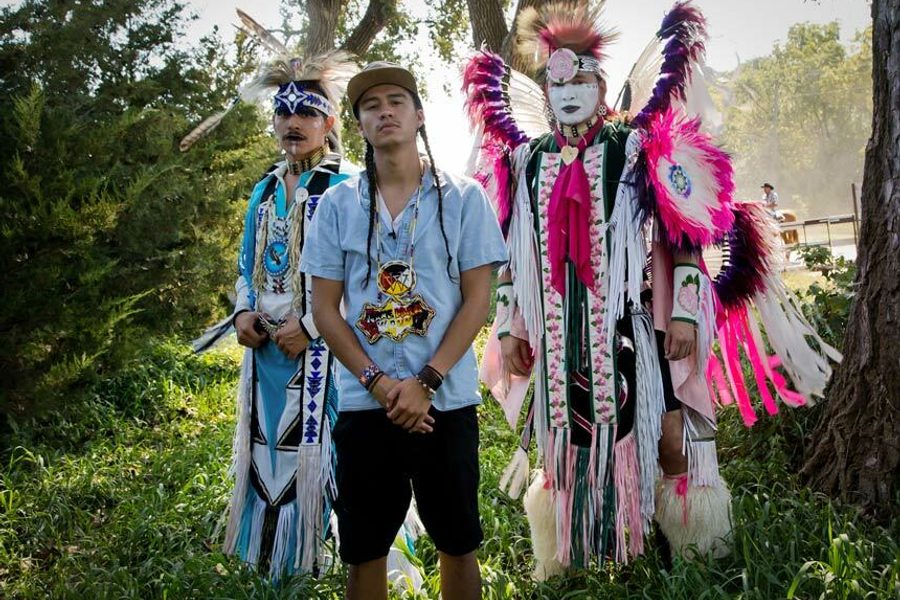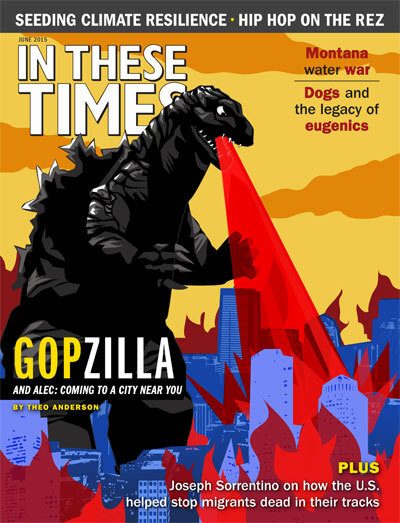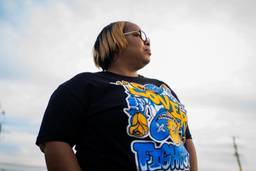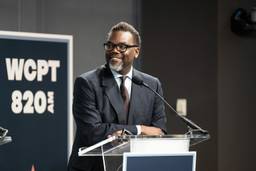Meet the 25-Year-Old Native Hip Hop Artist Who’s Using Music to Combat Colonialism
The Sicangu Lakota artist talks about growing up on a reservation and using music to educate young Native people.
Jessica Koski

For Frank Waln, 25, an award-winning Sicangu Lakota hip-hop artist, music is medicine. Born and raised on the Rosebud Sioux Reservation in South Dakota, Waln made his way to Chicago to earn a degree in audio arts and acoustics and embrace his true calling as an artist. His music embodies indigenous reality and values, bringing much-needed healing and creating pathways of empathy.
With performances and motivational workshops across the country, Waln is inspiring an entire generation of Native American youth to rise up in response to historical injustice. He has been featured on MTV’s Rebel Music and WBEZ’s Vocalo, and profiled in dozens of outlets, including Native Peoples Magazine, Indian Country Today, Cultural Survival, the Chicago Tribune, and USA Today.
In These Times spoke with Waln in Chicago in early April.
As a college student, you transferred universities and changed majors from pre-med to music. How did you come to realize that your path was in music?
I always wanted to heal and help people. It’s something I saw my grandfather doing, and that my mother does now, so it was always in me. I just didn’t know how. Not many people from my reservation go to college, and I was the first from my high school to get this very prestigious scholarship—a full ride, the Gates Millennium Scholarship—to wherever I chose to go. Music was my interest, but everyone said, “be a lawyer,” “be a doctor,” because not a lot of us get these opportunities. So I went to Creighton University in Nebraska to study pre-med.
In the summer, I worked at our Indian Health Service hospital and figured out that it wasn’t for me. Other stuff was happening in my life and I hit rock bottom. I took a year off, went home to my rez, poured my heart into music and found a new school where I could study that. I came to Chicago four years ago, and I graduated from Columbia College Chicago in May 2014 with a B.A. degree in audio arts and acoustics.
After I left Creighton, I told an elder I didn’t want to be a doctor anymore and wanted to do music. He said, “Sometimes music is the best medicine.” And that stays with me today.
What are the challenges as a Native American artist breaking through in the music world?
The culture shock I encountered when I moved to Chicago, realizing that people don’t know about Natives. The first week I was here, I met a girl who thought Native Americans were extinct.
As an artist, the challenges are complex and on multiple levels. My generation identified with hip hop, but there were no opportunities to express that, let alone make music. Another obstacle that I’m still working through as an indigenous hip hop artist is respecting the origins of hip hop in black culture, and not erasing that.
Who has influenced you as an artist?
My first encounter with hip hop was a CD I found on the side of the road: Eminem’s Marshall Mathers LP. It was so emotional, getting pain and frustration out. When it comes to the delivery in my music, Eminem was an influence. Kanye West was always a big influence as a producer and rapper. Nas, Dead Prez and Talib Kweli influenced my style of rapping. Robbie Robertson, a musician-songwriter, is another big influence as a Native artist. Lyrically, John Trudell, a Native activist and poet, is a big influence. His album Tribal Voice is probably my favorite. My mother, family and community inspire me—the people who are the reason I have a story to tell.
Your music raises awareness of contemporary Native American issues. What was it like growing up on the rez? And was Native American history taught in school?
It wasn’t easy growing up on one of the poorest reservations in the country. As indigenous people, we’re born into historical trauma and systems that were built on the destruction of our people. I didn’t know I was poor growing up. We had our culture, family and beautiful things, even though there are drugs, alcohol and violence as a result of the history our ancestors faced. Growing up on the rez made me who I am. I wouldn’t have it any other way.
I went to public school on my rez and I remember one paragraph about Native Americans in our history class, and it didn’t mention genocide. Kids aren’t learning it in school because the victors tell history and write the books. The educational system is failing when it comes to the true history of this country and the indigenous people that inhabit it. It is failing our whole society. That’s why we get people in college who think Native Americans are extinct.
I grew up next to Pine Ridge where the American Indian Movement occupied the town of Wounded Knee for 71 days in 1973. I was aware of resistance and a messed-up history, but I didn’t see that my reality was a direct result of all of that. I grew up buying into the system where we’re taught to hate ourselves and I thought my music and story wasn’t worth anything.
Going to Columbia College and taking classes like Culture, Race and Media, we would analyze mainstream media’s portrayal of marginalized people and how it affects their realities. I was able to connect the dots and realize that my lived experience, all these hardships my loved ones and I were facing, were a direct result of this atrocious history and things that our ancestors survived.
Could you explain how the Native worldview differs from that of the U.S. mainstream?
A lot of Western culture is about the individual, rather than seeing how everything is connected and related. In a lot of indigenous cultures, it is about community. Indigenous cultures understand that you’re an individual, but you play a part in the whole—and not just the community of human beings, but also part of the Earth. What we do to the land and the water will affect others, our grandchildren and our great-grandchildren. I was raised in a very matriarchal environment, and my family lived off of the land and taught me how to respect it because it takes care of us. That plays into my work.
People say I make protest music and that I’m an activist. I’m just telling my story and talking about the things preventing us from being happy, healthy and respected. If that makes me a rebel, then what are we saying about the systems that cause all of this for us?
The biggest environmental issue for us right now is the Keystone XL Pipeline, which would cut through our reservation. It would endanger the Ogallala Aquifer, our fresh water supply. Don’t we deserve water like everyone else? Haven’t we survived enough? Another threat comes with this, things like man camps [that house oil workers] and increased violence and sexual assault against our women who are already at the top for these statistics. We aren’t against infrastructure and jobs; just focus it somewhere that’s not going to destroy us.
You travel across the United States and Canada performing, especially for colleges and youth. How important is it for Native youth to have mentors like you?
Growing up, I didn’t have mentors around my age, but I definitely had elder mentors who believed in me. I think it’s important that we see people who look like us and come from the places we come from being successful in their own right and doing what they love. By doing what I do, I’m setting an example and just trying to be there for Native youth in any way I can.
The Lakota name given me by my elders is Oyate Teca Obmani, which means “walks with young people.” This came in a ceremony a couple years ago and it’s the path I’m supposed to take. Walking with young people is where I’ll have the most impact.
Can you talk about the power of music as a creative tool for social change?
Music’s role is bringing the emotional element to social justice issues and movements. We can stand up and give speeches all day and talk about facts, which are important and needed, but nothing can tap into people’s emotions like art. Ultimately, we don’t want to be preaching to the choir. A lot of our messages are falling on like-minded people. We need to reach those who don’t see the way we do, who don’t see the destruction of the Earth, and how colonialism and capitalism are destroying our communities.






